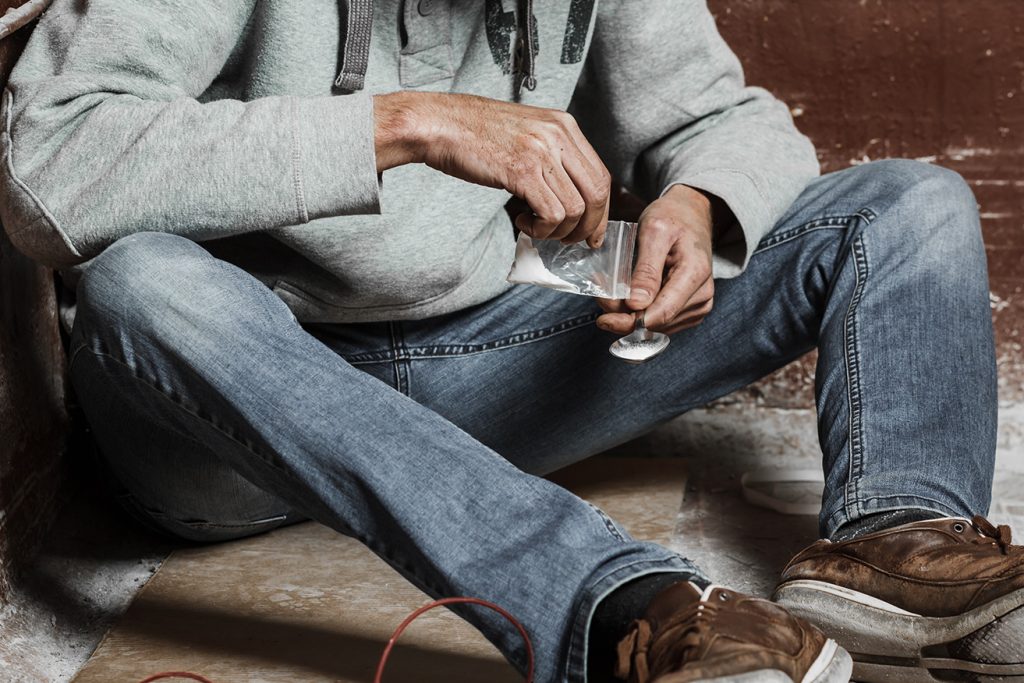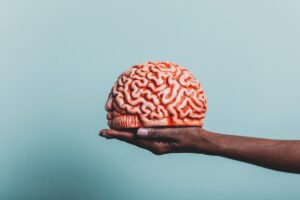Heroin, also known as diamorphine, is a powerful opiate.
The drug comes from the opium poppy, papaver somniferum (which means sleep-inducing milk). It is usually sold as a white or brown powder that can be ingested, snorted, smoked, or injected into the bloodstream with a hypodermic needle. Heroin is a powerful respiratory depressant that is sought after for its ability to produce a euphoric “high”. This high produced by heroin is the lure of what draws people to the substance. Individuals who abuse heroin can become addicted very quickly people will quickly develop a tolerance the drug. Once the tolerance to the effects of the drug occurs in the body, a heroin abuser will require increasingly larger doses of the drug to produce the same high as before. At this point the heroin abuser will develop a physical dependency to the substance and becomes a heroin addict, needing the drug to just properly function and get through everyday life activities. When the drug addicted individual is unable to obtain heroin, they will experience heroin withdrawals and require a detox for heroin. Heroin abuse can spiral out of control rapidly into a full-blown drug addiction. Some users of the drug started with a prescription pain killer, such as Oxycontin, and when their habit to the pills became too expensive, they sought a cheaper, more potent high. They often found that in heroin. But like Oxycontin, the potential for addiction is so great with heroin. Heroin addiction has ruined lives, derailed many careers, and shattered entire families.
What are the Signs of Heroin Abuse?
The signs of Heroin Abuse can come in behaviors from the individual as well as in physical symptoms. The following are signs that an individual is abusing heroin:
Behavioral Signs of Heroin Abuse
- Lying
- Isolation
- Sudden change in dress (long sleeves)
- Tired all the time
- Issues with work
- Legal problems
- Financial troubles
Physical Signs of Heroin Abuse
- Constricted pupils
- Scars from injection sites from IV drug use
- Constant sniffling
- Slurred or slowed speech
- “Nodding out” – appearing to fall asleep randomly and in awkward positions
What Do Heroin Withdrawals Feel Like?
Those who have experienced the drug withdrawals from heroin would describe the feeling as several different ways. The most common description is the comparison to a severe flu-like feeling. Heroin addicted individuals can begin to experience symptoms of heroin withdrawal as soon as a few hours after their last use of the drug. It can begin as a slight unpleasant feeling accompanied by a runny nose. Agitation will rise as the slight discomfort turns into muscle and bone aches. A cold sweat will come on in the coming hours. Sleep will seem like an impossibility as the heroin addict tosses and turns and can never seem to get comfortable. The seconds turn to minutes, each minute becomes hours, and whatever sleep you do receive is not restful. Nausea will set in usually within the first 24 hours. Heroin addicted individuals can have nausea so bad it induces vomiting. They can also experience diarrhea during this time. The peak of the symptoms will last about 3 days into the withdrawals and begin to improve over the next few days. While the severe discomfort of the drug withdrawals will be subsiding, the cravings for heroin will be intense for some time. That feeling of the rush will be craved by the drug addict and on the potential for relapse is great. Once the heroin addicted individual has been detoxed from the substance, the cravings actual intensify as they body desires the drug so bad that the thought of using will be almost overpowering, especially in the first 90-100 days off of heroin. Due to the extreme discomfort and intense cravings, many individuals find that attempts to cease abusing heroin fail on their own. In the majority of cases, professional intervention is required to help deal with the mental hold the power opiate has over the heroin addicted individual.
Heroin Withdrawal Symptoms
- Runny nose
- Muscle aches
- Bone aches
- Cold Sweat
- Fever
- Nausea
- Diarrhea
- Vomiting
- Restless legs
- Agitation
- Insomnia
How Do I Safely Detox from Heroin?
To be able to safely detox from heroin and get through the worst part of the withdrawal symptoms, an individual needs help. Heroin addicted individuals should attend a medically supervised inpatient drug and alcohol detox facility to be stabilized by trained and experienced nursing and medical staff. At the inpatient drug and alcohol detox facility, drug addicted individuals will be cared for while they go through the detox process. Staff will do their best to ensure you receive comfort in this time. There are medications that can help to lessen the symptoms of the withdrawals from heroin. Two such medications are Suboxone and methadone. Both are opioids and work much the same as heroin in the body. The different is Suboxone and methadone are longer acting opioids. By using a taper protocol, the heroin addicted individual will be slowly weened off the medication to ensure they do not remain physically dependent upon opioids. Other medication will lessen the various heroin withdrawal symptoms as well. Medication like clonidine can be given to lower the elevated blood pressure, Hydroxyzine can help with anxiety, and Trazadone can assist with sleep. While the physical dependency will pass during detox, the mental hold of heroin still grips the drug addicted individual. The next step in addiction treatment would be to attend an outpatient drug and alcohol rehab program.
The Heroin Abuse Treatment Program at Aftermath Addiction Treatment Center in Wakefield, MA
Once an individual is safely stabilized from Heroin withdrawals through a medically supervised inpatient drug and alcohol detox, they would then begin to receive addiction treatment for their heroin abuse. Aftermath Addiction Treatment Center, located in Wakefield, MA, offers the Heroin Abuse Treatment Program for individuals struggling with heroin addiction. The Heroin Abuse Treatment Program at Aftermath Addiction Treatment Center has several levels of care to better suit the individual’s unique needs. The highest level of care is the Full-Day Treatment Program, which includes 25 hours of addiction therapy. The next level of care would be the Half-Day Treatment. Our final level of care is our Outpatient Program. Aftermath Addiction Treatment Center also offers an FDT Program and an HDT Program through Telehealth Services for those with obligations at home. The various level of care offered at Aftermath Addiction Treatment Center allow for a drug addicted individual to receive as much treatment as they need. Studies have shown that the longer an individual stays in treatment the better their chances are of recovery from drug or alcohol addiction.
At Aftermath Addiction Treatment Center, you are more than a client. The team at Aftermath is invested in each client’s personal growth throughout their recovery process. Alone we are isolated, we feel weak and broken. When we are isolated, we become susceptible to the disease of addiction. But when we come together something miraculous happens. We become stronger. We find connection in the shared experiences of others and together we learn how to cope with the cravings, identify triggers, and deal with life without turning to drugs. That is when the miracle happens. You are the miracle. You are here, right now. You have gone through addiction and are still standing.





